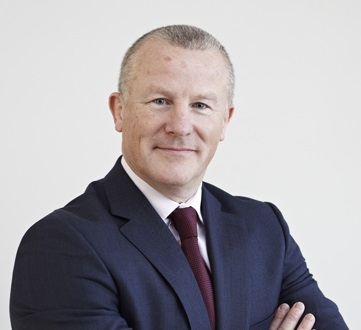Experienced Investor
Big decision for failed Woodford investors over £230m redress scheme

Four years after the Woodford fund collapse saw hundreds of thousands of investors lose their savings, they’re now faced with a big decision over a compensation scheme.
Investors in the LF Equity Income Fund (formerly the LF Woodford Equity Income Fund, WEIF) have received an update from Link Fund Solutions Limited (LFSL) regarding the next steps for the proposed compensation scheme.
LFSL said it is contacting investors “because we wish to offer to settle the potential claims they may have against LFSL” but added it “disputes all claims” but is “willing to enter into the settlement because it believes it offers the best outcome for investors and LFSL”.
The scheme targets any investor who was invested in the WEIF on 3 June 2019 (the fund’s suspension date) and any person they have transferred their claims to.
What Woodford investors need to know about the settlement scheme
The settlement consists of a fund of up to £230m which includes a voluntary contribution of up to £60m from LFSL’S ultimate parent Link Administration Holdings Limited. It will also voluntarily contribute up to £2.5m towards the costs of implementing the redress scheme.
However, the scheme is conditional on the sale of Link Group’s Fund Solutions business to asset management service firm Waystone Group.
The scheme also requires approval from a majority of scheme creditors – 50% of creditors representing 75% or more in value, during a vote expected to take place on 4 December 2023. Details of how to attend and vote at the meeting and vote without attending the meeting will be provided in due course.
If the required majority of creditors vote in favour of the scheme, the court will then consider in late December whether to approve the scheme. If approved, Link expects it will become effective “on or about 18 December 2023”.
As such investors could see a first distribution from the settlement fund of between £180m and £200m in Q1 2024. “Additional payments are also expected to be made as soon as possible”, Link added.
Woodford investors’ vote
For now, investors don’t need to take any action and Link said those investors would not be approached by or on behalf of LFSL to make a claim in the scheme.
“Do not give your bank account details, details of your claim or any other personal information to anyone who claims that they work for LFSL or on LFSL’s behalf,” it warned.
If approved it will be legally binding and means “in return for the payments made from the settlement fund, scheme creditors will no longer be able to make any claim against LFSL, the parent and other related parties relating to the WEIF”.
Link said the maximum settlement fund is approximately 77% of the amount which the Financial Conduct Authority claims represents the losses incurred by investors (£298m) who continued to hold shares in the WEIF on and after the suspension date “as a result of what it claims to be the regulatory misconduct of LFSL”.
If the settlement fund is distributed in full, it is estimated that investors will receive about 80% of the net asset value of the WEIF at the point of suspension – £2.56bn has already been distributed from the £3.6bn value of the fund.
Link said it believes investors are “better off with the scheme than without it” because it provides for all of LFSL’s available assets to be paid to relevant investors and the first payments will made much earlier.
It noted that the scheme “provides a convenient and streamlined process” for making payments to relevant investors as they will not need to complete any paperwork or carry out any other steps to receive payment as this will be made automatically in the same way other distributions are currently made.
Further, investors will each receive the same percentage payment because the settlement fund will be shared proportionally according to the number and class of shares held.
If the scheme becomes effective, all creditors will automatically be included in the scheme regardless of whether they voted for or against the scheme (or voted at all).
What happens if investors don’t vote in favour of the settlement scheme?
If the scheme doesn’t go ahead, Link suggested the likely outcome is “many years of litigation”, and if it successfully challenges claims, it may not be required to pay anything to investors.
If its challenge fails, there will be less money available to pay out as the £62.5m voluntary contribution won’t be made and the cost of defence “may be significant” thereby reducing the amount of money in the redress pot. The FCA has also suggested a £50m financial penalty which won’t be enforced if the scheme is approved, again reducing the redress pot.
And if the compensation amount is greater than LFSL’s assets, LFSL may enter into an insolvency proceeding which means additional costs. “This will again reduce the amount of money that LFSL has available to pay to the investors.”
Ryan Hughes, AJ Bell head of investment partnerships, said: “This is an important next step for investors looking to be compensated for the failure of the fund.
“Investors will now need to think carefully about how they wish to vote on the proposed scheme, which will happen towards the end of the year.
“The light at the end of the tunnel for investors is coming much closer into view, but there is still a high probability that this will not be fully completed until at least the middle of 2024, at which point five years will have passed since the suspension. Investors have been hugely patient in this long, drawn-out process but hopefully they can genuinely see an end is in sight.”